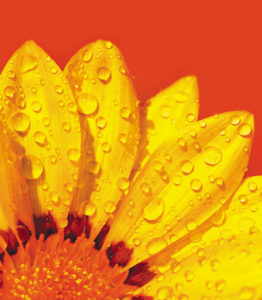Q. When and how far back can I trim my daisy bush without damaging it? It’s one of the “He-Loves-Me, He-Loves-Me-Not” Daisies. I’d like to keep it at its current height of about three feet.
 A. Daisies are best pruned in between flushes of flowers or in the spring of the year. Unfortunately, they always seem to be in bud or bloom so there is no perfect time to prune them. Hence, I’d trim them when the majority of the flowers are spent, realizing that I’ll be sacrificing some of the next flush of flowers. Trim the growth with a pair of hand pruners or use an electric hedge shears. I’d cut back the herbaceous or green stems avoiding the old woody portions of the plant. Plants trimmed back to bare stems are unattractive looking, and the pruning doesn’t encourage the lateral shoots. To keep it at three feet, you’ll need to prune it several times each year. Another option is not to prune it at all. Instead, enjoy the endless flowers and when the plant out grows its space, remove it and replace it with a new plant. Daisy plants are not that expensive and grow back quickly.
A. Daisies are best pruned in between flushes of flowers or in the spring of the year. Unfortunately, they always seem to be in bud or bloom so there is no perfect time to prune them. Hence, I’d trim them when the majority of the flowers are spent, realizing that I’ll be sacrificing some of the next flush of flowers. Trim the growth with a pair of hand pruners or use an electric hedge shears. I’d cut back the herbaceous or green stems avoiding the old woody portions of the plant. Plants trimmed back to bare stems are unattractive looking, and the pruning doesn’t encourage the lateral shoots. To keep it at three feet, you’ll need to prune it several times each year. Another option is not to prune it at all. Instead, enjoy the endless flowers and when the plant out grows its space, remove it and replace it with a new plant. Daisy plants are not that expensive and grow back quickly.
Note: Marguerite Daisy or Euryops are sometimes referred to as the “He-Loves-Me, He-Loves-Me-Not Daisy. It gets its name from a story of a day dreaming young girl’s method of determining whether the boy in her dream is the love of her life. She would pick a flower and remove each petal saying, “He-Loves-Me, He-Loves-Me-Not,” alternating the phrase between each petal. The answer lies with the last Daisy petal. I’m not so sure it’s used very often today as this was from a more innocent times.
Q. Why are my New Guinea Impatiens disappearing overnight? Something is cutting them off at the base and carrying them away, as I find no evidence of the plants or any part of them anywhere around.
A. I’d strongly suspect roof rats. Roof Rats obtain much of their water requirement from their food or from free water such as sprinklers. Hence, they’re very fond of fruit, especially oranges and tomatoes as they mature. Water restriction have curved their water supply so they’re forging on other plants aka, New Guinea Impatiens. New Guinea’s are a herbaceous and succulent plant so they’re a perfect target. Roof rats generally begin searching for food shortly after sunset. These rats may cache or hoard considerable amounts of solid food, which they will eat later. These food caches may be located in a variety of other hiding places, generally near their nests. they’re very mobile, so they’re a tough problem to control outdoors. Traps would work but not baits as there are too many household pets that could be harmed. My suggestion is to move on and replant with something else.
Q. I purchased a bag of pure Mesquite charcoal for barbecuing. Can you tell me the origin of Mesquite?
A. Mesquite is a very interesting large shrub or small tree that is indigenous to the southwest and the desert areas. There are three common species of the Mesquite: Honey Mesquite (Proposes gladiolas), Screwbean Mesquite (Proposes pubescens) and Velvet Mesquite (Proposes velutina). Mesquite grows to forty feet high and is deciduous. It’s a member of the pea family and has the characteristic bean pods which have long been used by humans, wildlife and livestock as a food source. It is estimated that over seventy-five percent of a Coyote’s diet in late summer is from the mesquite beans. Native Americans relied on the Mesquite pod as a dietary staple from which they made tea, syrup and a ground meal called Pinole. They also used the bark for basketry, fabrics and medicine. A favorite of bees and other insects, the Mesquite flowers has a honey, fragrance. Mesquite has a true tap root which can go down in the soil forty feet deep looking for moisture. The tap root can be larger in diameter than its truck. It is the tap root that is used for firewood while the above ground parts are used for furniture or tool handles. The density of its wood fibers makes Mesquite an extremely hardwood. It’s a favorite with those who like to grill because the density causes Mesquite to burn at temperatures higher than most other charcoals. It also burns slowly and is smokeless sealing in the natural juices as the meat cooks.
Leave a Reply